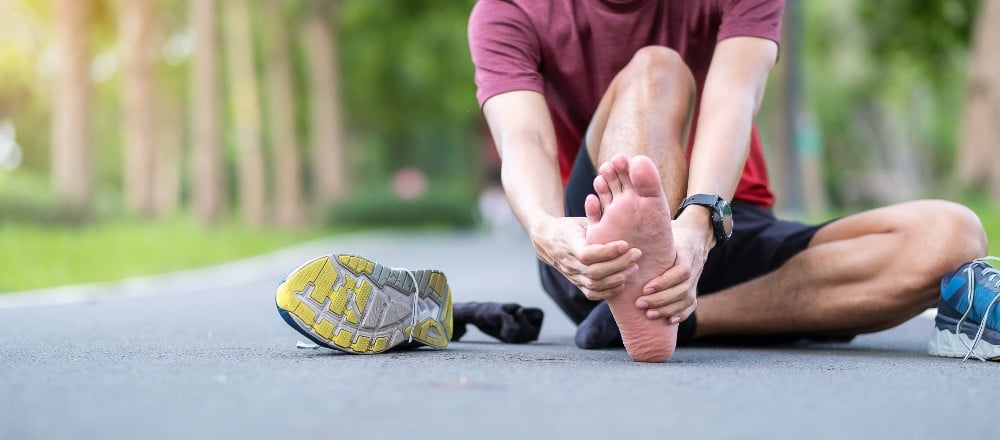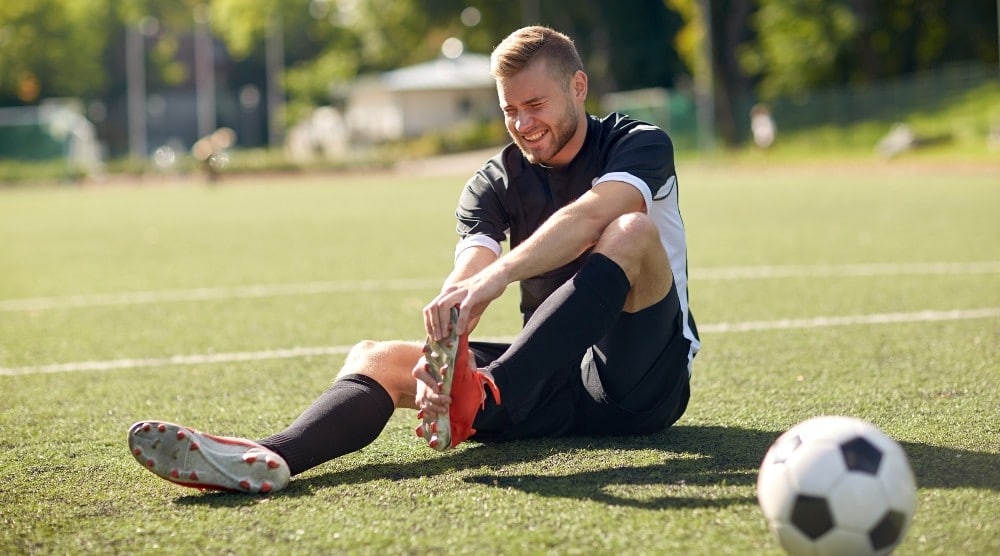Lower Your Risk of Spring Sports Injuries
Some common sports-related injuries are:
- Ligament sprains
- Muscle strain
- Nerve impingement
- Plantar fasciitis
- Shin splints
- Stress fractures
- Tendonitis
Some injuries can’t be prevented. For example, you can’t stop on-field collisions or control your opponents, but you can develop habits that help you prevent many common injuries. Before you step on the field, court, or track this season, take some time to give your body the tools it needs to stay strong and safe.

What Causes Injuries on The Field?
Sports injuries can happen to any athlete of any age or skill level, but some risk factors make injuries more likely:
- Age
- Body composition
- Environmental factors
- Inadequate recovery between workouts, overuse
- Poor sleep or nutrition
- Poorly fitting footwear or other equipment
- Psychological stress
- Repetitive movements
You may have little control over risk factors like age or environment, but there are steps you can take in other areas to reduce your risk of injury.
Tips For Avoiding Sports Injuries
Taking care of your body before and after playing can make your season safer and more enjoyable.
Stretch to Prevent Injuries
Stretching can reduce the chance of muscle injuries, improve athletic performance, increase flexibility, joint range of motion, and blood flow to the muscles, and reduce post-game soreness.
It’s wise to stretch before and after activity and two to three times per week when you’re not playing. Pre-game stretching should follow a warmup of light exercise like walking or jogging.
To get the most benefit from stretching, follow these guidelines:
- Stop if it hurts
- Hold each stretch for 10-30 seconds
- Don’t bounce or force it
- Don’t hold your breath – relax into the stretch as you exhale
- Stretch both sides of your body
- Stretch before and after playing

Stretches for Game-Ready Muscles
Ankle circles – While standing or seated on a bench, lift your left heel off the floor and gently circle your ankle to the left, then right. Continue for 60 seconds on each ankle.
Calf raises – Stand up straight. Push up and raise your heel until you are standing on your toes. Slowly lower back down.
Standing quad stretch – Stand on your left leg, lift your right foot. Grab your right foot with your right hand and gently pull it towards your buttocks. Hold for 30 seconds. Repeat with the left leg.
Forward lunge – Stand straight, feet hip-width apart. Step forward with your left leg, shifting your weight forward onto your heel. Lower your body until your thigh is parallel to the floor. Push into the left heel to stand up into the starting position. Repeat with the right leg.
Side lunge – Stand straight, feet hip-width apart. Step your left foot to the side as wide as you can. Step on your left heel as you drop your hips down and back into a squat, keeping your right leg straight. Push your left heel into the floor to return to your starting position.
Seated straddle lotus – Sit down, pull the soles of your feet together, and let your knees drop towards the floor. Put your forearms on the insides of your knees, and gently push your knees towards the floor. Lean forward from your hips and hold for five seconds.
Seated side straddle – Sit on the ground, legs straight and spread apart. Reach both hands forward to hold your left ankle. Bring your chin as close to your leg as possible.
Simple hamstring stretch – Sit on the floor with your legs out in front of you. Keeping your knees straight, extend your arms and bend forward until you feel it in the backs of your thighs.
Rest and Recover
You can also decrease your risk of injuries by knowing when to rest and recover. Take breaks during your game, allow your body time to rest after the game, and take some downtime during the week to give your muscles and joints time to rebuild and grow.
It’s essential to rest your muscles if you’re sore or have overextended yourself on the field. But it’s even more important to get enough quality sleep. When you don’t get enough, you’re more likely to suffer injuries, quicker to tire, and have decreased accuracy and reaction time, difficulty making decisions, and an overall decrease in athletic performance.
Wear the Right Footwear
Don’t let footwear be a fashion choice on the field. It’s more important to choose the right shoe and the right fit for the sport. Shoes that are worn out or don’t fit properly contribute to ankle, foot, and shin injuries like shin splints, plantar fasciitis, and tendonitis.
Be on Your Best Game to Avoid Sports Injuries
Nobody wants to ride the bench due to an injury. Taking care of your body on and off the field can help prevent injuries and keep you playing all season. Warm-up, play your best and take time to recover. But if you do get injured, don’t ignore the pain. Playing through an injury can make it worse and keep you out of the game longer.
If you’ve injured your foot or ankle, contact Advanced Foot & Ankle Centers of Illinois for an evaluation. We’ll work with you to develop the best treatment plan for your needs and get you back on the field as soon as possible.
